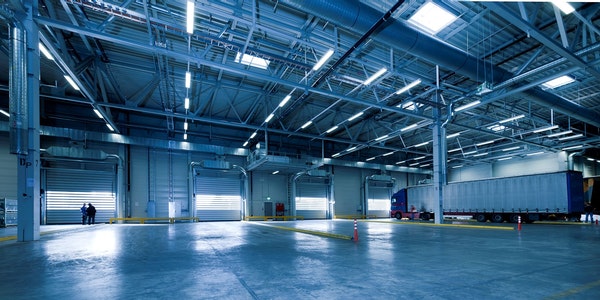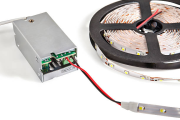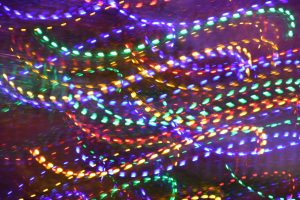How to classify LED drive power
Classifed by Driving Mode
LED power supply can be divided into two categories according to the driving mode:
Constant current type:
- The constant current drive circuit is ideal for driving LEDs, but the disadvantage is that the price is relatively high.
- Although the constant current circuit is not afraid of load short-circuit, it is strictly forbidden to open the load completely.
- The output current of the constant current drive circuit is constant, but the output DC voltage varies within a certain range with the size of the load resistance.
- Limit the number of LEDs used because it has the maximum withstand current and voltage values.

Constant voltage type:
- After the voltage regulator circuit determines the various parameters, the output is a fixed voltage, but the output current changes with the increase or decrease of the load.
- Although the voltage regulator circuit is not afraid of load opening, it is strictly forbidden to short-circuit the load completely.
- The voltage change after rectification will affect the brightness of the LED.
- To make each string of LEDs driven by a voltage regulator circuit show uniform brightness, you need to add a suitable resistance.
Classified by Circuit Structure
LED power supplies are classified according to circuit structure:
- Conventional transformer step-down:
The advantage of this kind of power supply is its small size, but its disadvantage is that the weight is heavy and the efficiency of the power supply is also very low, generally between 45% and 60%. Because of its low reliability, it is generally rarely used.
- Electronic transformer step-down:
The shortcomings of this power supply structure are low conversion efficiency, narrow voltage range, generally 180~240V, and large ripple interference.
- Capacitor step-down:
This type of LED power supply is easily affected by the fluctuation of the grid voltage, and the power supply efficiency is low. It is not suitable for the LED to be used when flashing, because the circuit is used to reduce the voltage through the capacitor. Very large, easy to damage the chip.
- Resistance step-down:
This kind of power supply has low power efficiency and low reliability of the system. Because the circuit is stepped down by resistors, it is greatly interfered by changes in the grid voltage, it is not easy to make a regulated power supply, and the step-down resistor itself consumes a large part of the energy.
- RCC step-down switching power supply:
The advantages of this type of LED power supply are that the voltage regulation range is relatively wide and the power supply efficiency is relatively high, generally 70% to 80%, and it is widely used. The main disadvantages are that the switching frequency is not easy to control, the load voltage ripple coefficient is large, and the load adaptability is poor under abnormal conditions.
- PWM control switching power supply:
At present, the LED power supply designed by PWM control mode is ideal, because the output voltage or current of this switching power supply is very stable. The power conversion efficiency is extremely high, generally as high as 80% to 90%, and the output voltage and current are very stable. Especially suitable for the driving power supply of LED street lamps. This type of LED power supply is mainly composed of four parts: input rectification and filtering part, output rectification and filtering part, PWM voltage stabilization control part, and switching energy conversion part. And this kind of circuit has perfect protection measures, it is a high-reliability power supply.
Characteristics of LED driving power supply
According to the power rules of power grid and the characteristic requirements of LED driving power supply, the following performance requirements should be considered when selecting and designing LED driving power supply.
- High efficiency, LED is an energy-saving product, the efficiency of the driving power should be high. It is particularly important for the structure in which the power supply is installed in the lamp. Because the luminous efficiency of LED decreases with the increase of LED temperature, the heat dissipation of LED is very important. The efficiency of the power supply is high, its power consumption is small, the heat in the lamp is small, which reduces the temperature rise of the lamp. It is good for delaying the light decay of LED.
- High power factor, power factor is the power grid load requirements. In general, there is no mandatory index for electric appliances under 70 watts. Although the power factor of a single electric appliance with small power is a little lower, it has little impact on the power grid, but when people light up at night, the same kind of load is too concentrated, which will cause serious pollution to the power grid. It is said that in the near future, there may be certain index requirements for the power factor of 30 W ~ 40 W LED driving power supply.
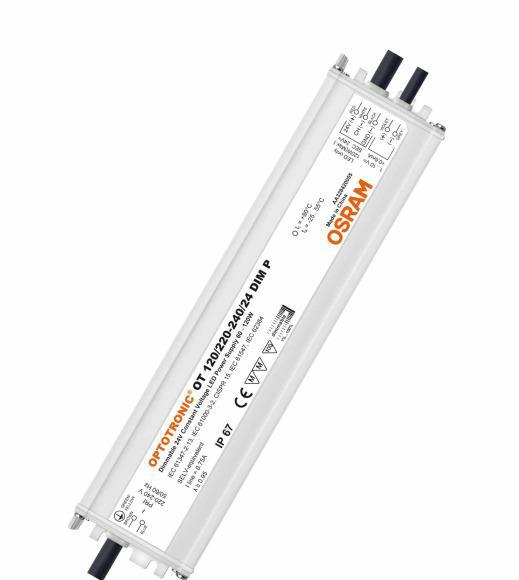
- There are two driving modes: one is a constant voltage source for multiple constant current sources, and each constant current source supplies power to each LED separately. In this way, the combination is flexible, one LED failure does not affect the work of other LEDs, but the cost will be slightly higher. The other is direct constant current power supply, LED series or parallel operation. It has the advantage of low cost, but poor flexibility. It also has to solve the problem of one LED failure, which does not affect the operation of other LEDs. These two forms coexist for a period of time. Multi channel constant current output power supply mode, in terms of cost and performance will be better. Maybe it will be the mainstream direction in the future.
- Surge protection, led anti surge ability is relatively poor, especially anti reverse voltage ability. It is also important to strengthen protection in this area. Some LED lights are installed outdoors, such as LED street lights. Due to the start-up and rejection of power grid load and the induction of lightning, all kinds of surges will invade from the power grid system, and some surges will lead to the damage of LED. Therefore, the LED driving power supply should have the ability to restrain the invasion of surge and protect the LED from being damaged.
- Protection function: in addition to the conventional protection function, it is better to add LED temperature negative feedback in the constant current output to prevent the LED temperature from being too high.
- Outdoor installation type lamps, LED drive power structure has good dustproof and waterproof performance, and is resistant to solar radiation. The LED drive power supply also has a long life span, which can reach more than 50000H, which can fully guarantee the operation of the LED light source, and it also meets the requirements of safety regulations and electromagnetic compatibility.
We illustrate its characteristics with the working principle of a certain drive power supply. The LED driver circuit adopts 2 dedicated IC circuits, which adds a smart power switch integrated module, which has a PWM control circuit and a 0.7A/730V VDMOS field effect power tube. The model of IC2 is TSM1101, and the IC has 2.5V inside. The reference voltage and two comparators composed of op amps are used to obtain the working current signal of the LED from R6 and input it to the CC comparator in IC2. After comparison and amplification, it is fed back to the previous stage. Obtain the working voltage signal of the LED from the voltage divider R4 and R5, and input it to the CV comparator in IC2. After comparison and amplification, it is also fed back to the previous stage. The feedback signals of the two comparators are both passed through the photocoupler (model SFH610A). ) Is coupled to the IC1 control pole.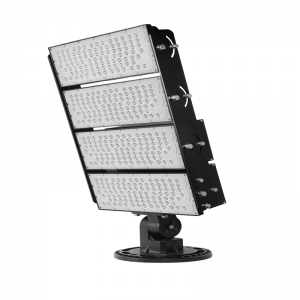
IC1 generates high-frequency signals to make its VDMOS tube continuously work between on and off. When the power supply voltage changes, the voltage on N3 changes and when the LED current and voltage change, these signals are all fed back to IC1 The control pole changes the duty cycle (or pulse width) of the high-frequency signal generated by IC1, and changes the on/off time ratio of its own VDMOS field effect power tube, so as to achieve the voltage and current output by N2 To achieve the purpose of constant output.
Transformer N1 is the primary winding, N2 is the secondary power output winding, N3 is the bias (working) winding of IC1, and N4 is the bias (working) winding of IC2. It can be seen from the circuit analysis that N2 is attached to the isolated safety Voltage output (28V) winding, N4 and N2 are directly connected to the output circuit. In order to ensure the requirements of safety standards, the output circuit and the circuit directly connected to the power grid must be completely isolated, so the feedback signal in the circuit passes through the high-voltage photoelectric The coupler is fed back to the previous stage, and the structure between N2 and N4 and NI and N3 in the transformer must meet the requirements of a safety isolation transformer.
In summary, it can be seen that LEDs need to have constant current and voltage-stabilizing components when working, but such components should have the characteristics of high voltage division, but low power consumption, otherwise they will have higher efficiency. Because of the large operating power consumption of the driving circuit, the efficiency of the overall system is greatly reduced by the LED, which is contrary to the purpose of energy saving and high efficiency. Therefore, resistors or series voltage regulator circuits should not be used as the main current-limiting circuit of the LED driver as much as possible, but high-efficiency circuits such as capacitors, inductors or active switching circuits should be used to ensure the high efficiency of the LED system.
The use of series integrated constant power output circuit can keep the light output of the LED constant in a wide range of power supply, but the efficiency of general IC circuits will decrease as a result. The use of an active switch circuit can ensure that the constant power output is achieved when the power supply voltage changes drastically at a higher conversion efficiency. At the current stage, the luminous efficiency of LED is far from being able to replace three-primary fluorescent lamps, but with its unique advantages, it can work efficiently under safe and special voltage conditions (swimming pools, underwater lamps in paddling pools, miner’s lamps).
In addition, it also has unique advantages in the direct use of green electricity (solar, wind, etc.), as well as emergency lighting. Especially in terms of dimming, LEDs can not only achieve 0-100% dimming, but also ensure that high luminous efficiency is maintained throughout the dimming process without compromising the life of the LED, which is difficult for gas discharge lamps.

